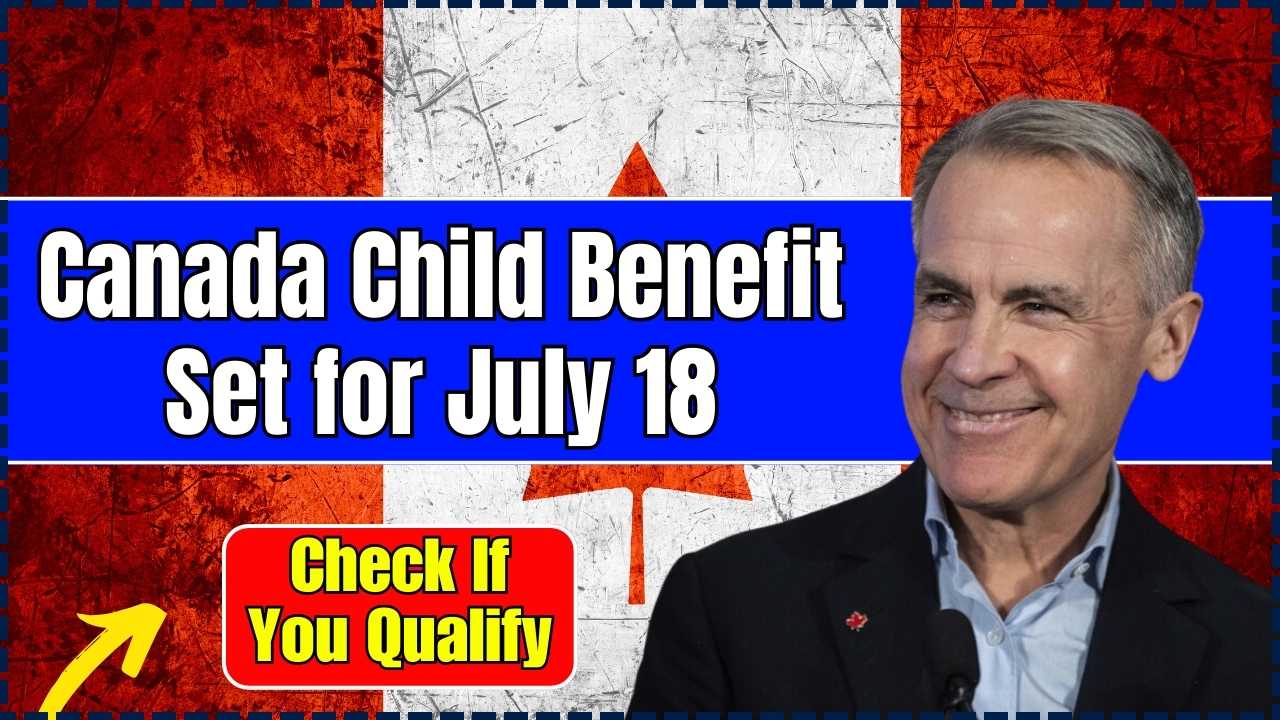Canada’s $840 Benefit Coming July 2025: Starting July 1, 2025, Canadians across the country can look forward to a welcome financial boost through a federal tax adjustment that could result in savings of up to $840 per household. This change stems from the government’s plan to reduce the lowest personal federal income tax rate from 15% to 14%, marking a significant shift in the nation’s tax policy to help middle-income families navigate the rising cost of living.

With inflation and affordability issues continuing to affect everyday Canadians, this new benefit is more than just a tax tweak — it’s part of a broader strategy to provide relief and support long-term financial resilience. Whether you’re a salaried employee, small business owner, retiree, or student entering the workforce, understanding this change can help you plan ahead.
In this article, we’ll cover what the $840 benefit entails, who qualifies, how it’s delivered, and how you can maximize your eligibility for other related government benefits. We’ll also share insights on payroll implementation, self-employed tax adjustments, and additional support available in 2025.
Canada’s $840 Benefit Coming July 2025
| Aspect | Details |
|---|---|
| Effective Date | July 1, 2025 |
| Benefit Type | Tax savings from reduced federal income tax rate |
| Maximum Annual Benefit | $840 per two-income family or $420 per individual |
| Tax Rate Change | Reduction of lowest federal income tax rate from 15% to 14% |
| Applicable Income Range | Full benefit for income up to $57,375; partial up to $114,750 |
| Eligibility | All Canadian residents with taxable income in eligible brackets |
| Official Information | canada.ca |
The $840 tax benefit launching July 2025 is a smart, streamlined way to provide real-time financial relief to millions of Canadians. Combined with expanded credits and allowances, it reflects a national policy shift focused on economic empowerment through tax fairness.
Understanding how this benefit interacts with your income, employment type, and household situation is key to unlocking its full value. Whether you’re budgeting for the year ahead or managing a growing family, this is a tax change worth preparing for.
What Is the $840 Benefit Coming in July 2025?
The $840 benefit refers to the maximum annual tax savings a two-income Canadian household can receive when the lowest federal income tax rate decreases from 15% to 14%. For individuals, the typical savings is up to $420 per year, while dual-income families earning within the applicable bracket could collectively save up to $840.
This tax relief will be reflected in reduced payroll deductions and applies directly to income earned after July 1, 2025. The benefit is automatic — no application or registration is required.
It’s important to note that these savings are based on the assumption that both individuals in a household are earning taxable income under the federal first bracket limit. The benefit is phased out at higher income levels.
Why Is the Government Reducing the Tax Rate?
The tax rate reduction is part of the federal government’s larger strategy to boost the purchasing power of Canadians and provide inflation relief without expanding program administration. By adjusting the tax rate instead of creating a new benefit or subsidy, the government minimizes red tape while delivering immediate savings to working Canadians.
This decision complements enhancements to existing support programs like the Canada Workers Benefit (CWB), the Canada Child Benefit (CCB), and the GST/HST Credit. These changes reflect a policy focus on income retention — allowing citizens to keep more of what they earn to offset increased living expenses.
Who Qualifies for the Full or Partial $840 Benefit?
This benefit is based entirely on income. If you’re a resident of Canada and file an income tax return for 2025, you may qualify for the full or partial benefit.
Eligibility Breakdown:
- Full Benefit: Anyone earning up to $57,375 in 2025 will benefit fully from the 1% tax rate reduction.
- Partial Benefit: If your income is between $57,376 and $114,750, you will see a smaller benefit, which decreases as your income increases.
- No Benefit: If your income exceeds $114,750, you will not receive this specific tax relief.
Keep in mind, these thresholds may be slightly adjusted when the final 2025 tax brackets are released. Also, tax-exempt income (such as certain disability benefits or government allowances) does not count toward taxable income.
How Will You Receive the Benefit?
There’s no cheque in the mail or deposit into your account for this benefit. Instead, your savings will show up as lower income tax deductions starting with your July 2025 pay periods.
Employees:
If you’re employed, your payroll department should adjust your federal withholding tax to reflect the 14% rate beginning July 1. This means your net pay will slightly increase.
Self-Employed:
Self-employed individuals will see the difference when they file their 2025 income tax return in 2026. You can also adjust your quarterly instalments in anticipation of the reduced tax liability.
Make sure your employer or payroll software provider is aware of this change to avoid over-deduction.
Additional Financial Support in 2025
The federal government has also expanded or indexed several other support programs for 2025. These benefits can stack with the $840 tax savings, giving eligible Canadians a much-needed financial cushion.
1. Canada Workers Benefit (CWB)
- Supplements wages for low-income earners.
- 2025 Maximums:
- $1,590 for single individuals
- $2,739 for families
- Additional $821 for those with disabilities
- Advance Payments:
- January 10, July 11, and October 10, 2025
2. Canada Child Benefit (CCB)
- Supports families with children under 18.
- Annual Maximums:
- $7,997 per child under age 6
- $6,748 per child aged 6–17
- Monthly Payment Dates:
- July 18, August 20, September 19, October 20, November 20, December 12, 2025
3. GST/HST Credit
- Offsets sales tax costs for low- and moderate-income Canadians.
- 2025 Maximums:
- $533 for singles
- $698 for couples
- $184 per child
- Quarterly Payment Dates:
- January 3, April 4, July 4, October 3, 2025
How to Maximize Canada’s $840 Benefit Coming July 2025
To ensure you receive the full advantage of the $840 benefit and related programs, take the following actions:
1. File Your Taxes Early
Many benefits, including this one, are linked to your income tax return. Filing on time ensures you don’t miss out on credits or deductions.
2. Use CRA My Account
Update your address, marital status, and direct deposit details through your CRA online account.
3. Review Your Pay Stubs
Once July 2025 arrives, confirm that your payroll reflects the 14% rate. Ask HR for clarification if it doesn’t.
4. Adjust Instalments (Self-Employed)
If you pay quarterly tax instalments, adjust your 2025 amounts accordingly. The CRA allows changes based on expected annual income.
5. Consult a Tax Professional
Tax advisors can help ensure you don’t leave money on the table — especially if you qualify for multiple programs.
FAQs On Canada’s $840 Benefit Coming July 2025
Will I receive the $840 as a one-time payment?
No. This is not a direct payment. It’s a reduction in your federal tax rate that saves you money throughout the year.
How will I know if I’m getting the full benefit?
If your income is under $57,375, and your payroll has been adjusted to the new rate, you will receive the full benefit automatically.
Is this change permanent?
The rate cut is legislated for 2025 onward, but could be reviewed or modified by future federal budgets.
What if my employer doesn’t update payroll?
You will still receive the benefit when you file your taxes in 2026. But your take-home pay will be lower until the update is made.
Will this impact my refund?
Yes. If less tax is deducted from your pay throughout the year, your refund may be smaller. But you’ve already received the benefit in your pay.






